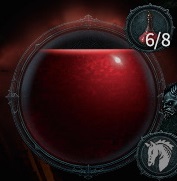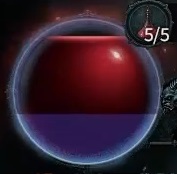Defenses for Beginners
Last Updated:April 24, 2025|Changelog
In Diablo 4, dealing damage is the most important thing for dealing with Hell's minions, but you shouldn't forget about your defense. After all, staying alive is necessary to deal any damage at all. In this article, we dive into different stats and mechanics that help you protect yourself even against the toughest minions of hell.

Life
The most basic way to increase your total defense. Your Life stat measures how alive you are. When it hits 0, you die, and at that point, the only thing you can do is respawn at the last checkpoint or get revived by your party members.
You get some Base Life for leveling up, starting at 20 Life at level 1, and up to 400 Life at level 60. There are several other ways to increase your Maximum Life:
- +Max Life roll on your items (scales with item power)
- Paragon Nodes
- Enhanced Challenging Shout (Barbarian Only)
- Imposing Presence (Barbarian Only)
- Golems - Blood (Necromancer Only)
- Ursine Strength (Druid Only)
Here is the formula for calculating Life Total:
Total Life = (Base Life + Flat Life) * (1 + % Increase Life1) * (1 + % Increase Life2) * ... * (1 + % Increase LifeN)
- Base Life: This is your character's Life without any added stats. It represents the Life you have on a naked character, in addition to the Life gained from leveling up. It goes up to 400 at level 60.
- % Increase Life1, % Increase Life2, ...: These are percentage-based bonuses or multipliers that can affect your character's Life. You can have multiple of these bonuses, each being a separate multiplier.
- Flat Life: This component represents the additional Flat Life your character gains. This is added to your Base Life and then further increased by +% Increase Life.
Restoring Life
There are also a few different ways to restore your life after you take damage. First of all, every class has access to Healing Vials. Using one will instantly restore some flat amount of your Life (based on the level of the Healing Vial) and also 35% of your Maximum Life over the next 3 seconds. You can store several charges at once (boosted by the Renown system), and you regain these charges by killing enemies or damaging Elites and Bosses past a certain threshold.
Other than Healing Vials, there are some more ways to restore Life:
- +Life per Second rolls on Helmets, Chest, Pants, Boots, Amulet, and Rings
- +Life per Hit rolls on Gloves, Amulets, Rings, and Weapons,
- +Life on Kill from equipping Skulls in weapons.
- Several Skills and Passives that can heal you for a percentage of your Maximum Life
- Healers inside of towns
- Healing Wells
On top of that, you can boost all these different ways of gaining Life with the Healing Received stat, which can be rolled on Helmets, Chest, and Pants, and also comes from Skulls socketed into armor.
Life On Kill and Life Regeneration bonuses are very weak compared to the damage you take, so unless your build can make very good use of the few skills and passives that can restore Life, you will be healing mostly with Healing Vials.

Barrier
Barrier is a mechanic very similar to Life, except it only lasts for a certain duration. When you take damage, it first depletes your Barrier and then the remainder goes into Life. When you have multiple Barriers, their amount is added together, but the duration of each Barrier is tracked separately. When one of your Barriers expires, your total Barrier goes down. Your total Barrier cannot exceed your Maximum Life. Here are several methods, although not an exhaustive list, to gain Barrier:
- Defensive Aspect of the Protector
- Defensive Aspect of Shielding Storm (Necromancer Only)
- Snap Frozen Defensive Aspect (Rogue Only)
- Iron Skin (Barbarian Only)
- Ice Armor and Prime Deep Freeze (Sorcerer Only)
- Protection (Sorcerer Only)
- Earthen Bulwark (Druid only)
- Temerity
You can increase the amount of Barrier you get from any source with the Barrier Generation, such as from tempering and Amethyst socketed into armor. However, since nearly every Barrier scales with your Maximum Life, it's usually better to just focus on your Life to make your Barriers stronger. Keep in mind, damage reduction while Fortified does not apply to Barriers. If you plan on using Barrier as a main source of survivability, adjust accordingly.
Armor
Armor is one of your main ways of reducing Physical damage. You get Armor from every armor piece and its amount scales linearly with the item's power. Additionally, you also get 0.2 Armor for each point of Strength. Furthermore, you can increase your Armor by socketing Skulls into Jewelry. All these sources of flat Armor can be increased by percentage-based bonuses on your Amulet, from tempering, and Defensive Aspect of Disobedience.
Armor reduces all incoming Physical damage by a percentage based on your total Armor and the level of your character. As of patch 2.0.2, armor is now capped at 1000 at level 60. Armor's damage reduction scales exponentially with your Armor, meaning that instead of having 42.5% Damage Reduction with 500 armor, you have roughly 24% Damage Reduction. This damage reduction cannot exceed 85%, meaning that your Armor has an effective cap, but the amount of Armor you need to gain 1% damage reduction keeps increasing as you (and your enemies) level up.
As of patch 2.0.2, you need 1000 armor to be armor-capped in the content you are doing. However, something introduced in this patch was that Torment difficulty reduces your armor by 250-1000 from Torment 1 to 4. This means that to do Torment 4, your character needs a total of 2000 armor, as 1000 is removed for playing in Torment 4. Once you have 1000 armor in the difficulty you are playing, you no longer need to worry about it until you increase the difficulty.
Resistances
To reduce Elemental (Cold, Fire, Lightning, Poison, and Shadow) damage, you need to stack corresponding Elemental Resistances. Unlike Armor, Resistances don't come as an enigmatic number that transforms into damage reduction percentage through a complicated level-based formula. Instead, Resistances come as a percentage already. Some things to note about them:
- Resistances stack additively. As you would expect, if you get two sources of +20% Fire Resistance, the outcome is 40% Fire Resistance. If you would get hit by an attack that deals 100 Fire Damage, you would take 60 Fire Damage. Pretty straightforward.
- Resistances have a cap. Resistance stats cap at 70%. Some effects can increase your maximum resistance value up to 85%, including but not limited to resistance boosting Elixirs and Incenses.
- Resistances have a penalty at high world tiers. In the World Tiers 3 and 4 (Nightmare and Torment) all your Resistances are reduced by 25% and 50% respectively.
Capping all your Resistances is an important part of increasing your survivability. You can get Resistance from your Jewelry, Armor, Shield, Gems, Paragon Nodes, Skills, and the Mercenary Raheir. Intelligence also gives +0.02% All Resistance per 1 Intelligence.
Damage Reduction
The most important way to reduce incoming damage is Damage Reduction. This stat comes in a certain percentage and does exactly what it says: reduces all incoming damage by that percentage if the conditions are met. You can get damage reduction from:
- Skills
- Passives
- Legendary Aspects
- Every class gets an extra 92% Damage Reduction in PvP
Damage Reduction stacks multiplicatively. That doesn't mean that Damage Reduction becomes less effective as you stack it. If you get a new effect that gives you 20% Damage Reduction, you will take 20% less damage than without this effect, simple as that. What it does mean is that it's impossible to become invincible just by stacking Damage Reduction.

The only time when Damage Reduction stacks additively is when it comes from the same source. For example, when you put multiple ranks into the Mana Shield Sorcerer passive, or when using the Rogue skill Dark Shroud, which gives up to 5 shrouding shadows and a stacking Damage Reduction value for each shadow you have.
Fortify
Barbarians, Druids, and Necromancers have access to a unique source of Damage Reduction that comes with its own set of mechanics to increase their defense. There are several skills, passives, and Legendary Aspects that can give you some amount of Fortify. When your Fortify is greater than or equal to your current Life, you become Fortified. Fortified characters have 15% Damage Reduction. This number can be increased by the Defensive Stance passive. When you are Fortified, incoming damage reduces both your Life and your Fortify by the same amount. Keep in mind, Damage Reduction while Fortified does not interact with the damage taken to your Barriers.
Dodge
When you are hit by any attack you have a chance to dodge it, completely nullifying all damage and other harmful effects. You can't dodge individual ticks of Damage over Time (DoT) effects, but you can dodge the initial attack and prevent the DoT from being applied to you in the first place. Certain attacks should be dodgeable but are not currently, such as certain boss attacks. There are a few ways to get dodge chance:
- 0.06% Dodge Chance per point of Dexterity
- Rolls on Pants and Boots
- Tempering on Head, Chest, Pants, and Amulet
- Assimilation Resource Aspect
- Escape Artist's Aspect and Aspect of Elusive Menace (Rogue Only)
- Agile (Rogue Only)
Much like Damage Reduction, Dodge Chance from affixes and tempering stacks inverse multiplicatively, but Dodge Chance from Dexterity and sources such as Aspect of Elusive Menace are additive. This makes it possible to reach 100% Dodge Chance with enough investment.
Here is the formula for calculating Dodge Chance:
[1-(1-Dodge% 1) x (1-Dodge% 2) x … x (1-Dodge% N))] + [Dodge% from Dexterity] + [Additive Dodge% 1] + … + [Additive Dodge% N]
Defense Summary
Understanding how defense works in Diablo 4 is very important if you want to spend your time slaying monsters rather than decorating the carpet. To put it simply, defense comes down to stacking your Life and/or Barrier, building Armor and Resistances, as well as lots of different kinds of Damage Reduction and not chugging Healing Vials like your life depends on it (because it does).
Credits
Written by Northwar, Avarilyn